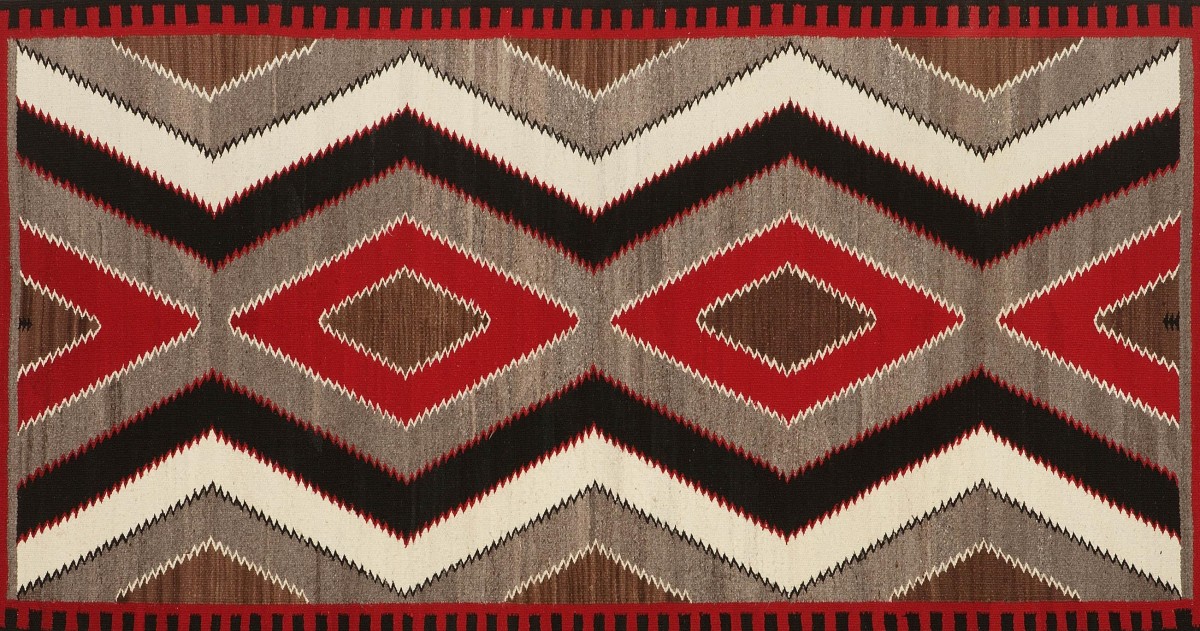The exhibition included 33 rugs, saddle blankets and wearing blankets woven by Navajo Indians between 1875 and 1940 and representing the Crystal, Ganado and Lukachukai Weaving Districts on the Navajo Reservation. Shown with these are five rugs representing Rio Grande Hispanic Weaving. Some descendants of Francisco Vásquez de Coronado’s conquistadores (who brought sheep to the new world) and Mexican Indians with whom they intermarried moved to what is now New Mexico and there developed a distinctive weaving style, lasting from 1700-1930 and incorporating their two-fold tradition. Though the Navajo had long been weavers, they learned from these settlers to weave with wool and adapted both Mexican Indian and Spanish designs in their weaving. One large display case includes, as well, choice pieces of Navajo silver and turquoise jewelry from a private collection and dating from the same era as the weavings.
Playing continuously throughout the run of the exhibition were Mingei International’s films: “AMERICAN INDIAN ART – A Timeless Legacy” and “ARROWS OF THE SPIRIT – North American Indian Adornment from Prehistory to the Present.”
